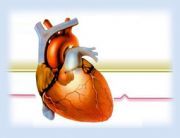Article
New Data on Stroke Risk in Patients with Diabetes and Atrial Fibrillation
Author(s):
Although they had more cardiovascular comorbidities, patients with atrial fibrillation and diabetes experienced rates of ischemic stroke comparable to those in AF patients without diabetes.

Diabetes may not be associated with elevated risk of ischemic stroke in elderly Japanese patients with atrial fibrilaltion, according to study results presented at the 2013 American Heart Association Scientific Sessions.
Diabetes is a major risk factor of ischemic stroke in patients with atrial fibrillation (AF)‑‑which is a fairly common arrhythmic disorder among elderly patients in Japan (reportedly 0.6% of total population). To determine the extent of this risk, Japanese researchers compared the clinical backgrounds of 825 AF patients with diabetes (mean age of 73.9 years) and 2,836 AF patients without diabetes (mean age of 74.2 years) using data from the Fushimi AF Registry.
One-year follow-up was completed in 2,548 patients as of April 2013.
Compared to patients who did not have diabetes, patients with atrial fibrillation and diabetes had more comorbidities (including hypertension, dyslipidemia, coronary artery disease, and chronic kidney disease), and higher CHADS2 scores (2.99 vs. 1.79; p<0.0001).
Although more patients with diabetes received prescriptions for anticoagulation treatment (55.2% vs. 49.3%; p=0.0029), the rate of previous ischemic stroke was comparable between the two groups (18.6% vs. 16.9%; p=0.28).
Further, the rate of previous ischemic stroke in patients with diabetes was not associated with blood glucose level (glucose ≥200 mg/dl 14.9% vs. <200 mg/dl 19.3%, p=0.21) or HbA1c level (HbA1c [NGSP] ≥6.5% 17.1% vs. <6.5% 18.5%, p=0.66).
The authors reported that the rate of previous ischemic stroke in patients with diabetes was equivalent regardless of whether they had been treated with insulin or oral hypoglycemic agents.
During the one-year follow-up period, the researchers reported an the two groups experienced roughly equivalent incidence rates of ischemic stroke (diabetes 1.8% vs. non-diabetes 2.1%, p=0.62). This was also the case for patients who were treated with oral anticoagulants vs. those who did not receive treatment with these medications (with anticoagulants 0.93% vs. 2.49%, p=0.66; without anticoagulants 2.18% vs. 1.39%, p=0.41).
In the summary of the study results, the authors wrote that these data from the Fushimi AF registry represent the clinical profile of “real-world Japanese AF patients,” and provide evidence that diabetes “may not be a risk of ischemic stroke, at least in Japanese AF patients.”




